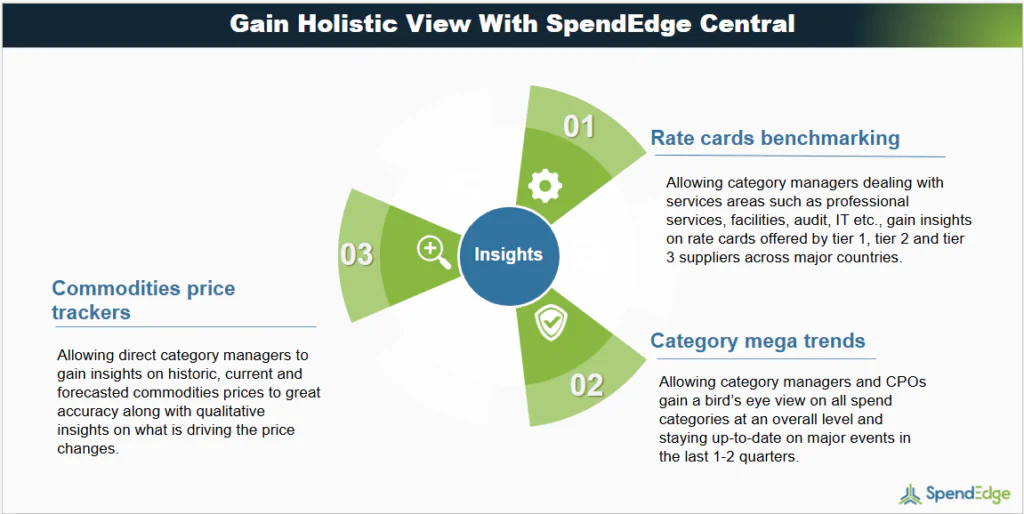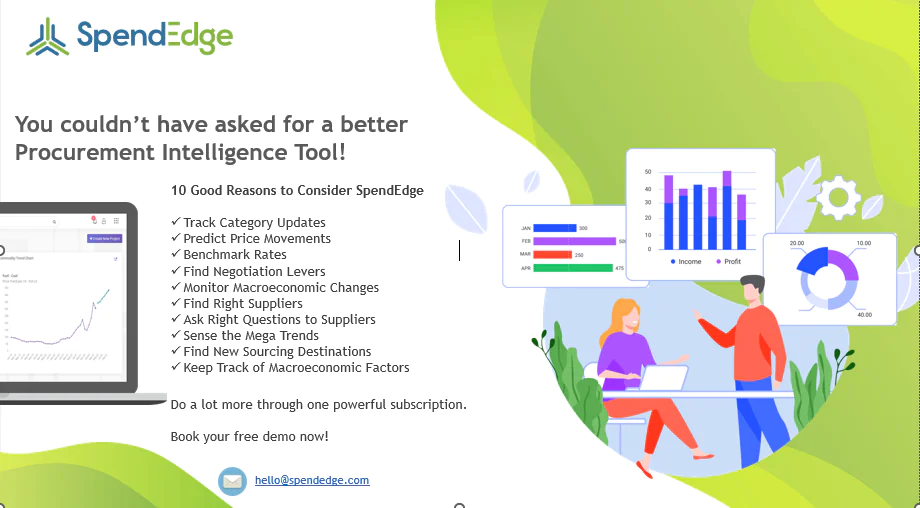Written by: Srinivas
Procurement category roadmap is vital!
A comprehensive procurement category roadmap is essential for aligning category management plan with business strategy, pinpointing value creation opportunities, and guaranteeing the efficient management of procurement categories. It presents a strategic blueprint for overseeing overall direct and indirect procurement within a company, aligning category objectives with business requirements. It aids in pinpointing opportunities and threats, enhancing contract and supplier relationships, and delivering value and outcomes. The category management plan also delineates goals, strategies, and schedules for each category, ensuring a methodical approach to handling complexity and unleashing substantial potential.
The process entails evaluating the current status of the category, defining the envisioned future state, pinpointing gaps and opportunities, and formulating an action plan. The plan is regularly assessed and revised based on performance metrics, market trends, and input from stakeholders to gauge progress and tackle challenges. Establishing uniform principles across procurement categories and integrating them into daily operations is crucial for the success and expansion of sustainable procurement endeavors.
The key elements of an effective procurement category roadmap include:

Evaluate the Current State:
- Examine the existing performance, obstacles, and potential within the procurement category using methods such as SWOT, PESTLE, and stakeholder analysis.
- Clearly define the future state by establishing specific, measurable goals and key results for the category that are in line with the broader business strategy and objectives. Quantify the potential advantages.
- Identify gaps and opportunities by pinpointing the disparities between the present and the desired future state. Prioritize areas for enhancement and innovation according to their impact and feasibility.
Create the Action Plan:
Clearly define the tasks, materials, accountabilities, and schedules needed to carry out the category transformation projects. Utilize project management resources such as RACI and Gantt charts.
Implementing and Conveying the Plan:
- Secure stakeholder approval and cooperation through change management, involving stakeholders, and executing a communication strategy.
- It is essential to periodically assess progress, analyze outcomes, and revise the strategy by taking into account performance metrics, industry developments, and input from stakeholders. Utilize dashboards, scorecards, and reports for this purpose.
The procurement category roadmap serves as a strategic blueprint aligning category objectives with the overarching business requirements, pinpointing potential opportunities and threats, and enhancing supplier partnerships to provide tangible value.
Importance of the Service
Developing Right Category Management Skills
Category management plan necessitates advanced expertise in market intelligence, analytics, strategic planning, and relationship building. Category managers must carry out research, categorize segments, evaluate suppliers, bargain contracts, oversee performance, and handle risks. It is essential to offer training and engage all individuals in the transition process. In addition, flawed, insufficient, or isolated data can significantly impede category management endeavors. Creating a centralized data repository, utilizing sophisticated analytics, and merging data throughout procurement operations are essential for obtaining practical insights.
Aligning Stakeholder Interests Across Different Teams
It can be challenging to balance the needs and expectations of different stakeholders such as business units, management, end-users, and suppliers. These stakeholders may have varying priorities when it comes to factors like price, quality, delivery, or sustainability. Achieving alignment requires effective communication, understanding their motivations, and being willing to compromise. It is also crucial to address resistance to change, effectively communicate the benefits, and gain support from stakeholders in order to successfully implement category management plan. Thoroughly documenting processes, roles, and responsibilities can facilitate the process of driving change.
Mitigating Risks and Uncertainties
Category management can pose risks such as supply interruptions, quality concerns, price changes, contract disagreements, and violations of regulations. To address these challenges, it is important to carry out risk evaluations, create backup plans, track key performance indicators, and take corrective measures. Striking the ideal balance between standardizing category management processes and retaining the flexibility to accommodate changing business needs is a difficult task. Excessive standardization can impede adaptability, while too much flexibility can lead to inconsistencies.
How SpendEdge can help you?
Gain accurate category insights through up-to-date reports
SpendEdge Central platform provides accurate insights on critical direct and indirect spend areas including agro commodities, chemicals, components and spares, facility management, IT, logistics and transportation, managed services, marketing, packaging and labeling, professional services, telecom, utilities etc., to help category managers gain insights necessary to draft their category strategy roadmap. The reports are refreshed every 6 months to ensure recency of information and accurate reflection of ground reality.
Gain access to all critical insights for category roadmap development
SpendEdge reports are developed to include insights for each stage of category management including sections such as Category Market Insights, Category Pricing Insights, Cost Saving Opportunities, TCO, Cost Breakdown Analysis, Sourcing Best Practices, Sustainability Best Practices, Category Ecosystem, Category Management Strategy, Category Management Enablers, RFx Questions, Contracting Best Practices, SLAs, Supplier Selection Criteria, Top Supplier Profiles etc., covered at global as well as regional levels. This ensures you have one source that covers all vital insights.
Not just category insights, gain a holistic view
SpendEdge Central not only covers category intelligence reports on 900+ direct and indirect procurement categories, it also includes sections focusing on:

Beyond this, the tool covers a bunch of value-added services in the form of AI powered supplier risk monitoring tool, macroeconomic factors tacker, periodic whitepapers and webinars, top sourcing destinations tracker etc.,
Helping a North American Pharma Company Devise Efficient Category Strategy
Our client is a mid-sized pharma company in North America, and it has operations across the US, Europe, APAC and few South American Countries. The company has been growing consistently over the last 4 years and expanding operations and introduction of new product lines. In this process, they had a need for revamping category strategy for all major direct and indirect procurement categories including chemicals, APIs, packaging, professional services, corporate services, facilities, marketing etc. They had plans of restructuring the entire category teams and needed end-to-end support for the restructuring.
Based on multiple discussions with the client stakeholders including Sourcing Center of Excellence, Category Managers and Directors of Direct and Indirect Procurement, we designed an end-to-end solution including access to SpendEdge Central platform along with 7 FTEs providing on-going support for deep-dive research requirements. The SpendEdge Central platform was the need of the hour for the client as they were planning to revamp the entire category strategy for over 20 spend areas spanning across 300+ sub-categories.
The SpendEdge Central tool provided them with insights tailored for each sub-category covering Category Market Insights, Category Pricing Insights, Cost Saving Opportunities, TCO, Cost Breakdown Analysis, Sourcing Best Practices, Sustainability Best Practices, Category Ecosystem, Category Management Strategy, Category Management Enablers, RFx Questions, Contracting Best Practices, SLAs, Supplier Selection Criteria, Top Supplier Profiles etc., This helped the category managers get enough reference points and insights on their categories of interest and ease their work of developing the category strategy roadmap documents.
For categories much mature in the procurement lifecycle and a well-defined category strategy, they were able to gain deep-dive insights using rate cards benchmarking, automated supplier risk assessment, deep-dive cost models, supplier identification and benchmarking, peer group best practices benchmarking etc., We were able to deliver a comprehensive solution tailored to the growing business needs of the client.





